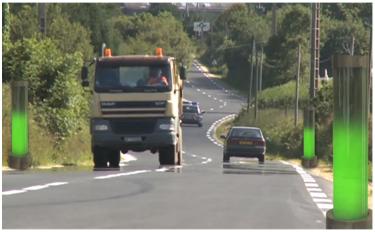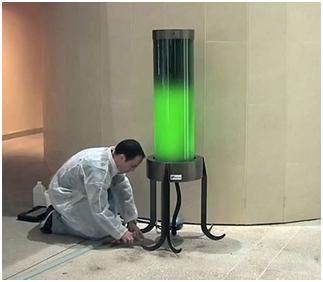Algae Street Lamps To Suck Up CO2
Algae have lived on the earth for billions of years as a large and diverse group of microorganisms. Though this term has been associated generally with the slimy green stuff that accumulates on the surface of a stagnant pond, seaweed and kelp is also member of the algae family.
Algae is much useful and beneficial for human beings according to recent researches and their potential as the major attention has been diverted to energy resources over the last few years and scientists are trying to get use of everything wasted to give efficiency in new way.
Pierre Calleja, French biochemist is researching continuously on algae as a potential source for helping clean the air of carbon dioxide. He has spent several years developing what looks to be an interesting street lamp that feeds totally on carbon dioxide in our atmosphere around us and help to reduce air pollution through these algae lamps.
These algae lamps are bigger in size and look similar to massive tanks which have been filled with water and algae. As you can see from the video below, the lamps, making use of a lighted environment, work with the added micro-algae to scrub out the C02 in the air. What’s not exactly clear is how this process works.
There are certainly examples out there of micro-algae being bred specifically to absorb carbon emissions (you can even try building this one if you have the DIY skills), but whether that includes this pet project of Calleja is unknown. Perhaps it involves a carbon sink making use of photosynthesis?

There’s no denying that the street lights are cool, and if they became a regular fixture in densely populated cities – and are actually viable – they could have massive impact air pollution in urban areas where trees are scarce.
About Author

Dev
Dev is keener in bringing new and interesting topics forward. This desire has driven him in the right path and made him a pro in writing about eco-friendly gadgets and technologies. He delivers apt information by combining facts, figures, and research.
